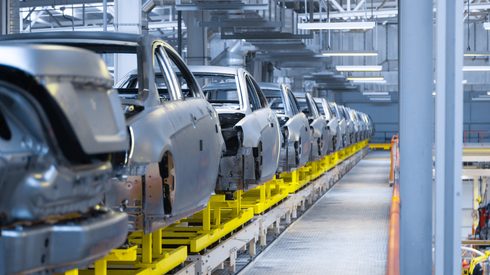In the rapidly evolving world of electric vehicles (EVs) and lithium-ion cell technology, grasping the intricacies of cell cost is crucial for market participants along the battery supply chain. Understanding ‘should-costs’, in $/kWh, is essential for optimizing cell design, making supply chain decisions and negotiating contracts for materials and cells. However, there is very little transparent data across the value chain, which makes cost modelling a difficult task.
The Fastmarkets Battery Cost Index (BCI) addresses this as a monthly modelled-cost tracker for various NCM and LFP cells across different countries. With this forecasting and analysis, EV battery and automakers can dive into the key material cost drivers, such as lithium, nickel, cobalt, synthetic and natural graphite, electrolyte and separator, as well as the manufacturing OPEX of CAM and cell production at a scale of 1 GWh/yr.
How does the Battery Cost Index work?
The bill of materials of different Li-ion cells on the market is first assessed and the material intensities are averaged for each chemistry and converted to $/kWh. These values are updated, accounting for yield losses in CAM and cell production, which are then combined with Fastmarkets material spot pricing and external data to calculate material costs. The CAM plant and cell gigafactory sub-models estimate manufacturing costs considering local economic factors such as labour and utility rates, and land, construction and maintenance costs.
Battery Cost Index preview
Examples from the November edition can be found below. Figure 1 presents a historical view of cell costs for China from January 2022 to October 2023. Figure 2 looks at current NCM-811 cell costs across different countries.
Cell costs in China have fallen drastically since peaking in March of 2022, driven by the fall in raw material prices. Lithium hydroxide and lithium carbonate are at present close to price parity. As a result, LFP is currently just 4% lower in cell cost than NCM-811, at 79.2 $/kWh compared to 82.7 $/kWh respectively.
The should-cost of producing NCM-811 cells at 1 GWh/yr in different countries is presented here. In the model, the raw materials are shipped from China and both CAM and cell are produced locally. The NCM-811 cell cost in the USA is 114 $/kWh, comparable to Germany at 110 $/kWh, and 35% higher than that of China at 85 $/kWh.
Tesla 4680 cell cost breakdown
For a more focused analysis rather than an average cost for a specific chemistry, the BCI can also be tailored to your specific cell design or manufacturing requirements. We have provided an example of how the BCI has been tailored for the Tesla 4680 cell (pre-pilot line sample) for a production rate of 1 GWh/yr. The Tesla 4680 cell Bill of Materials is obtained from the teardown and chemical analysis report generated by About:Energy. The modelled cost breakdown of the cell is provided, revealing material and manufacturing costs for the USA, Germany and China. For a more detailed demo of the modelling methodology, please get in touch.
Access the free report here
Follow this link below and submit your details to access this free report. For further information on the Fastmarkets Battery Cost Index, or the Tesla 4680 cell report including generating data with a different set of manufacturing parameters and/or for another cell, please contact us.






